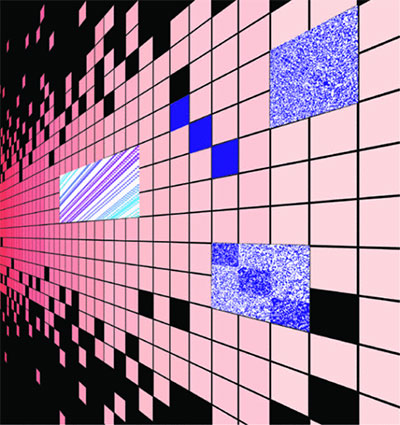Harnessing Structures in Big Data via Guaranteed Low-Rank Matrix Estimation: Recent Theory and Fast Algorithms via Convex and Nonconvex Optimization
Top Reasons to Join SPS Today!
1. IEEE Signal Processing Magazine
2. Signal Processing Digital Library*
3. Inside Signal Processing Newsletter
4. SPS Resource Center
5. Career advancement & recognition
6. Discounts on conferences and publications
7. Professional networking
8. Communities for students, young professionals, and women
9. Volunteer opportunities
10. Coming soon! PDH/CEU credits
Click here to learn more.
Harnessing Structures in Big Data via Guaranteed Low-Rank Matrix Estimation: Recent Theory and Fast Algorithms via Convex and Nonconvex Optimization
Low-rank modeling plays a pivotal role in signal processing and machine learning, with applications ranging from collaborative filtering, video surveillance, and medical imaging to dimensionality reduction and adaptive filtering. Many modern high-dimensional data and interactions thereof can be modeled as lying approximately in a low-dimensional subspace or manifold, possibly with additional structures, and its proper exploitations lead to significant cost reduction in sensing, computation, and storage. In recent years, there has been a plethora of progress in understanding how to exploit low-rank structures using computationally efficient procedures in a provable manner, including both convex and nonconvex approaches. On one side, convex relaxations such as nuclear norm minimization often lead to statistically optimal procedures for estimating low-rank matrices, where first-order methods are developed to address the computational challenges; on the other side, there is emerging evidence that properly designed nonconvex procedures, such as projected gradient descent, often provide globally optimal solutions with a much lower computational cost in many problems. This survey article provides a unified overview of these recent advances in low-rank matrix estimation from incomplete measurements. Attention is paid to rigorous characterization of the performance of these algorithms and to problems where the lowrank matrix has additional structural properties that require new algorithmic designs and theoretical analysis.
Low-rank modeling plays a pivotal role in signal processing and machine learning, with applications ranging from collaborative filtering, video surveillance, and medical imaging to dimensionality reduction and adaptive filtering. Many modern high-dimensional data and interactions thereof can be modeled as  lying approximately in a low-dimensional subspace or manifold, possibly with additional structures, and its proper exploitations lead to significant cost reduction in sensing, computation, and storage. In recent years, there has been a plethora of progress in understanding how to exploit low-rank structures using computationally efficient procedures in a provable manner, including both convex and nonconvex approaches. On one side, convex relaxations such as nuclear norm minimization often lead to statistically optimal procedures for estimating low-rank matrices, where first-order methods are developed to address the computational challenges; on the other side, there is emerging evidence that properly designed nonconvex procedures, such as projected gradient descent, often provide globally optimal solutions with a much lower computational cost in many problems. This survey article provides a unified overview of these recent advances in low-rank matrix estimation from incomplete measurements. Attention is paid to rigorous characterization of the performance of these algorithms and to problems where the low-rank matrix has additional structural properties that require new algorithmic designs and theoretical analysis.
lying approximately in a low-dimensional subspace or manifold, possibly with additional structures, and its proper exploitations lead to significant cost reduction in sensing, computation, and storage. In recent years, there has been a plethora of progress in understanding how to exploit low-rank structures using computationally efficient procedures in a provable manner, including both convex and nonconvex approaches. On one side, convex relaxations such as nuclear norm minimization often lead to statistically optimal procedures for estimating low-rank matrices, where first-order methods are developed to address the computational challenges; on the other side, there is emerging evidence that properly designed nonconvex procedures, such as projected gradient descent, often provide globally optimal solutions with a much lower computational cost in many problems. This survey article provides a unified overview of these recent advances in low-rank matrix estimation from incomplete measurements. Attention is paid to rigorous characterization of the performance of these algorithms and to problems where the low-rank matrix has additional structural properties that require new algorithmic designs and theoretical analysis.
The ubiquity of advanced sensing and imaging technologies produce vast amounts of data at an unprecedented rate. A fundamental goal of signal processing is to extract, and possibly track the evolution of, the relevant structural information faithfully from such high-dimensional data, ideally with a minimal amount of computation, storage, and human intervention. To overcome the curse of dimensionality, it is important to exploit the fact that real-world data often possess some low-dimensional geometric structures. In particular, such structures allow for a succinct description of the data by a number of parameters much smaller than the ambient dimension. One popular postulate of low-dimensional structures is sparsity, i.e., a signal can be represented using a few nonzero coefficients in a proper domain. For instance, a natural image often has a sparse representation in the wavelet domain. The field of compressed sensing, has made tremendous progress in capitalizing on the sparsity structures, particularly in solving underdetermined linear systems arising from sample-starved applications such as medical imaging, spectrum sensing, and network monitoring. In these applications, compressed sensing techniques allow for faithful estimation of the signal of interest from a number of measurements proportional to the sparsity level—much fewer than that required by traditional techniques. The power of compressed sensing has made it a disruptive technology in many applications such as magnetic resonance imaging (MRI): a cardiac cine scan can now be performed within 25 s, with the patients breathing freely. This is in sharp contrast to the previous status quo, where the scan takes up to 6 min and the patients need to hold their breath several times
SPS Social Media
- IEEE SPS Facebook Page https://www.facebook.com/ieeeSPS
- IEEE SPS X Page https://x.com/IEEEsps
- IEEE SPS Instagram Page https://www.instagram.com/ieeesps/?hl=en
- IEEE SPS LinkedIn Page https://www.linkedin.com/company/ieeesps/
- IEEE SPS YouTube Channel https://www.youtube.com/ieeeSPS














